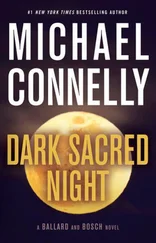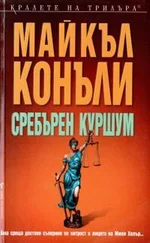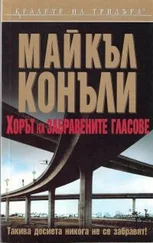Besides that, I was down to my last peremptory challenge and I knew there was no way I would be able to milk it for three more hours. We would fill the box before the courtroom went dark and the prosecution in the murder of Sam Scales would begin in the morning.
The good news was that the panel was largely set with jurors who I believed ranged on the defense meter from yellow — the middle ground — to deep green for pro-defense. Because of long-embedded and rightful distrust of police in minority communities, Black and brown jurors were always prized by the defense because they tended to view the testimony of police officers with suspicion. I had managed to keep four African Americans and two Latinas on the panel, fending off Dana Berg’s efforts to jettison the Blacks in particular. When one Black panelist revealed under questioning that she had once made a donation to the local Black Lives Matter organization, Berg first asked for the woman to be dismissed for cause. Making the request to an African-American judge took a certain level of courage, but it also underlined Berg’s singular purpose in convicting me. When the judge denied the motion, the prosecutor then attempted to use a peremptory challenge. That was when I swung in with an objection that the move was based on race, a clear exception to the rules of peremptory challenges. The judge agreed and the juror was seated. The ruling put Berg on notice in regard to future efforts to sculpt the jury along racial lines but then allowed me to do just that.
It was a big win for the defense but the last round of challenges had left three new faces in the box and I had just one peremptory. All three were white — two women and one man. And this was where my extraordinary juror profiling came into play. Early the morning before, Cisco had posted himself in the First Street garage, where jurors were directed to park. At that point, a few hundred potential jurors had been summoned for jury duty. Cisco had no way of knowing who would end up on my panel but he took note of character-defining aspects of the people arriving: things like make and model of cars, registrations, bumper stickers, interior contents, and so on. A person driving a Mercedes SL is going to have a different worldview from someone driving a Toyota Prius.
Sometimes you want the Mercedes on the jury. Sometimes you want the Prius.
After the first morning session with the hundred people called for the panel in my case, Cisco went back to the garage at lunchtime and then again at the end of the day. By his fourth time in the garage on Wednesday morning, he was recognizing people assigned to my case and building intel on many of them.
When court was back in session, he returned from the garage, sat in the gallery, and communicated what he knew about each potential juror to my co-counsel. I wasn’t alone at the table but I wasn’t with Jennifer Aronson either. My new co-counsel was Maggie McPherson. She had taken a leave of absence from the District Attorney’s Office and answered my distress call. I could think of no one better to be sitting next to as I faced the most difficult challenge of my life.
You never want to use your last peremptory, because you never know who will take the seat of the potential juror you just dismissed. You could clear the way for a new face that is a prosecutor’s dream, and you are left with nothing with which to stop it. So you always hold back the last peremptory for emergency circumstances only. I learned this the hard way as a baby lawyer when I was defending a man accused of assaulting a police officer and resisting arrest. I felt sure that the assault charge was bogus, an add-on by the arresting officer because of personal animosity. The officer was white and my client Black. During jury selection I gambled with my last peremptory to kick out a potential juror who was yellow on my meter. There were still several African Americans in the courtroom pool waiting to be randomly called to the box. I figured my chances were almost fifty-fifty that one of them would get the call to take the open seat for questioning. The move paid off. A Black woman was called, but under questioning she revealed that she was the daughter of a retired law enforcement officer who had served in the Sheriff’s Department for thirty-two years. I questioned her at length, trying to elicit an answer that would get her bumped for cause, but she maintained her stance that she could view the case impartially. The judge denied my request to dismiss her, so there I was, with a cop’s daughter on my assault-on-a-police-officer jury and no peremptory to change it. My client went down on all charges and spent a year in a county detention center for a crime I believed he had not committed.
I followed my usual routine for charting and tracking jurors through the selection process. A plain manila file folder was open flat on the defense table. I had drawn what I called the ice-cube tray across both flaps: a long rectangle divided into fourteen squares for the jury of twelve and two alternates. Each cube was two inches square — the size of a small Post-it Note. I wrote the salient thoughts and details about each prospective juror in the cube numbered for the jury box seat the candidate occupied. As jurors were dismissed and new people took the seats, I used Post-its to cover the no-longer-needed details and start again. Charting everything on the file folder allowed me to flip it closed if inquiring eyes wandered over from the prosecution table.
The prosecution got to question the new additions to the panel first. And while Berg went through her routine questions, Maggie and I checked the texts coming to her laptop from Cisco, who had to disguise what he was doing because no one but the attorneys on the case was allowed to use electronic devices in the courtroom. Cisco hid his phone from the courtroom deputies by keeping it down on the bench next to one of his massive thighs.
To protect the anonymity of the jury in a criminal case, the prospective jurors were referred to by numbers given to them when they checked in at the jury coordination center on the first floor. Cisco’s texts did the same.
17 parked in handicap — no tag.
That reference was to the male member of the new trio. It was an interesting piece of information but not something I would be able to go at directly without possibly giving away how I got the information. Revealing that I had an investigator scoping out potential jurors in the parking garage would not go over well with the judge or the California bar. It didn’t go over well with Maggie McFierce either. She was getting a quick education in criminal defense and didn’t always like what she was learning. But I wasn’t worried. She was now co-opted by the attorney-client relationship.
I had watched number 17 stand up in the gallery when his number was called. He had squeezed past others out of the row and then moved to the jury box for questioning without showing any obvious physical difficulty or handicap. Of course, there were other possible unseen issues that could have resulted in his receiving a handicap tag. But it bothered me. If the man was a cheat, I didn’t want him on the jury.
Cisco immediately followed his first missive with a text on one of the women.
68 should be 86ed. Trump 2020 bumper sticker.
This was good intel. Politics were a good window into a person’s soul. If 68 was a supporter of the president, it was likely she was a law-and-order hard-liner — not good for a guy accused of murder. That this person would continue to support the president after the media had documented his many, many untruths was a factor as well. It was blind loyalty to a cause, and an indicator that truthfulness was not an important part of her framework.
I agreed with Cisco. She had to go.
On the third potential juror — number 21 — Cisco had limited intel.
Читать дальше
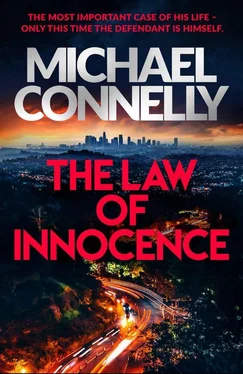
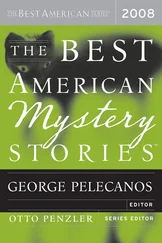
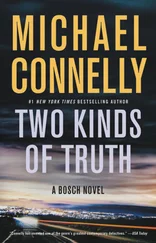


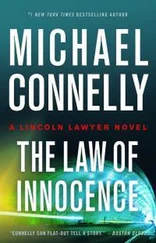
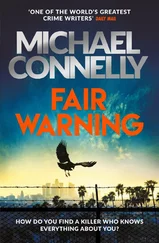
![Майкл Коннелли - The Night Fire [Harry Bosch - 22]](/books/405630/majkl-konnelli-the-night-fire-harry-bosch-22-thumb.webp)
